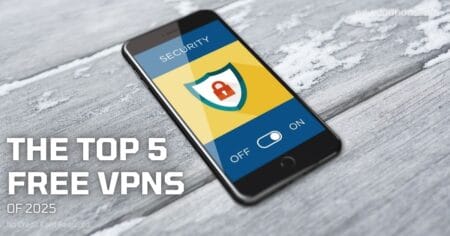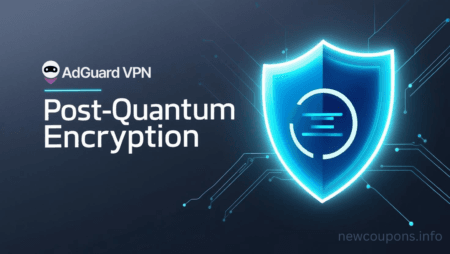In today’s digital age, our dependence on the internet has increased significantly, making it a crucial aspect of both our personal and professional lives. While the internet offers a plethora of benefits, it also exposes us to various risks. Cybercriminals are always on the lookout for opportunities to attack, and statistics show that an average of one cyberattack occurs every 39 seconds. Shockingly, 95% of these incidents stem from human errors.

Cyberattacks may have different motives, including criminal, personal, or political, and can take various forms. Among the most common types of cyberattacks are phishing, malware and ransomware attacks, social engineering attacks, and denial-of-service attacks. It is, therefore, essential to safeguard oneself against these risks by adopting practical measures and implementing best practices.
To help you get started, we recommend visiting the New Coupons blog, where you will find valuable information on detecting phishing attacks using an email example, as well as practical ways to protect yourself against them. By prioritizing your cyber protection, you can mitigate the risks associated with cyberattacks and safeguard your personal and professional information.
Some of the most common types of cyberattacks include:
- Malware attacks: These involve the use of malicious software that can harm, disrupt, or turn off your computer, network, device, or server without your knowledge. Spyware, ransomware, remote trojans, and computer worms are all examples of attacks carried out by malicious software.
- Password attacks: Attackers employ techniques like credential stuffing, guessing, brute force attacks, dictionary attacks, rainbow table attacks, and others to crack passwords. It is crucial to use strong passwords to protect yourself against such attacks.
- DDoS (Distributed Denial of Service) attacks: This type of attack aims to disrupt information systems by either causing malfunctions or overwhelming them with excessive information, rendering them ineffective.
- Social Engineering: This form of attack involves manipulating and deceiving individuals to gain access to confidential information or systems. This attack can be highly effective by exploiting human characteristics such as trustworthiness and naivety.
- SQL Injection attacks: This is a type of attack on a website that involves manipulating a SQL query to gain unauthorized access to the database. Attackers insert malicious code into a vulnerable search box to extract sensitive information, modify or delete data, or even obtain administrative privileges.
- Cryptojacking: Cryptojacking is when attackers use someone else’s computer to mine cryptocurrency by infecting a website or manipulating the victim to click on a malicious link. The code works in the background without the victim’s knowledge.
- Brute Force attacks: The act of an unauthorized individual gaining access to a system by attempting various passwords until the correct one is discovered is commonly referred to as password guessing. This technique can prove to be highly effective when employed against weak passwords.
- And some others.
What is Phishing, and How Does It Work?

Phishing, a form of Social engineering, is a cyber threat that remains rampant in the digital world. Cybercriminals employ deceptive tactics to trick unsuspecting victims into disclosing sensitive information. Such information includes credit card numbers, usernames, and passwords for various digital services such as bank accounts, PayPal accounts, and social networks. Attackers may even deceive victims into downloading malicious software on their devices.
Typically, attackers use deceptive techniques such as fake emails or private messages on communication apps. The messages often pose as legitimate companies or organizations. Victims receive SMS, email, or private messages urging them to click on the attached links.
These links may appear genuine or contain subtle, easily overlooked spelling mistakes. Upon clicking, individuals are led to fraudulent websites with deceptive data entry forms. If victims enter their information on these fraudulent websites, it becomes accessible to attackers, putting their sensitive data at significant risk.
Phishing messages may also include attachments that carry malicious software.
How To Protect Yourself Against Phishing Attacks? 8 Helpful Tips!

We have created an illustrative example of an email phishing attack highlighting the prevalent signs of phishing attempts. Although the demonstration is exaggerated, it serves as a cautionary measure to increase awareness of the common practices adopted by cybercriminals. It’s recommended that you review the example to gain insight into attackers’ strategies to deceive individuals into divulging their sensitive information.
It is crucial to exercise caution when receiving emails. Scrutinizing the sender’s email address is a fundamental step in ensuring authenticity. Any doubts regarding the email’s legitimacy should prompt the recipient to contact the supposed sender directly using a verified phone number, such as their bank’s. Even if the sender’s email address appears to be the official address of the alleged sender, it does not guarantee authenticity. Therefore, paying close attention to other potential signs of fraud within the message is vital.
Emails appearing to be sent from official email addresses, such as those of banks, the police, or even friends, should be approached with caution. The emails may also give the impression of being sent from an official domain. Therefore, extreme caution should be exercised before responding to such messages, especially when sharing personal information.
Checking the recipient field of the message is another critical step in ensuring authenticity. An empty recipient field, indicating blind carbon copy (bcc), is a common practice in mass messages often associated with fraudulent activities.
The reply-to email address should also be carefully examined. If it differs from the sender’s address, it may be a sign of fraud, and caution should be exercised.
The email subject line should be thoroughly examined for excessive exclamation marks, incorrect language, spelling mistakes, or urgent or threatening language. These elements may indicate the possibility of fraud.
The content of the email should also be reviewed thoroughly. If the text is written unusually, contains spelling mistakes, or appears to be a poorly translated message from another language, it is likely a fraudulent communication.
Always check the links in emails before opening them. Verify suspicious links by visiting the official website of the provider or using a domain verification tool. Please ensure to verify the location where a link redirects before clicking on it. Despite links appearing authentic, they may redirect to false websites. It is advisable to hover the mouse over the link without clicking on it to reveal the actual location of the link.
One common technique used in phishing attacks is to prompt quick action through emails, often accompanied by threats of unpleasant consequences if an immediate response is not provided. It is essential to be cautious of such emails and verify the authenticity of the contents before responding.
In case of an email containing an attachment that appears to be suspicious, it is advisable not to open it immediately. Even if the attachment appears to be a .pdf or .doc file, it does not guarantee security. The recipient should only open the attachment if they have verified that it is not fraudulent.
It is important to note that phishing emails often exhibit only some of the indicators above simultaneously. When encountering an unexpected or unusual message, such as an email, which may urge you to divulge personal information, it is crucial to take heed of the individual cues presented in the example.
Bottom Line
Phishing attacks pose a significant security threat, and it is essential to recognize the warning signs to avoid getting caught. While the illustrative examples mentioned above are not a substitute for comprehensive security awareness training, they can help identify some crucial indicators of attempted phishing attacks.
You are always to keep in mind that phishing attacks exploit human nature, and user compromise is a daunting security challenge. To detect active breaches and minimize the damage that successful breaches can cause, it is imperative to implement adequate phishing prevention controls as part of a broader zero-trust strategy. This approach can help mitigate the risk of falling victim to phishing attacks and ensure that your business or organization remains secure.
Have you ever received a phishing message? If yes, could you please share your opinion on how to prevent such messages in the future?




